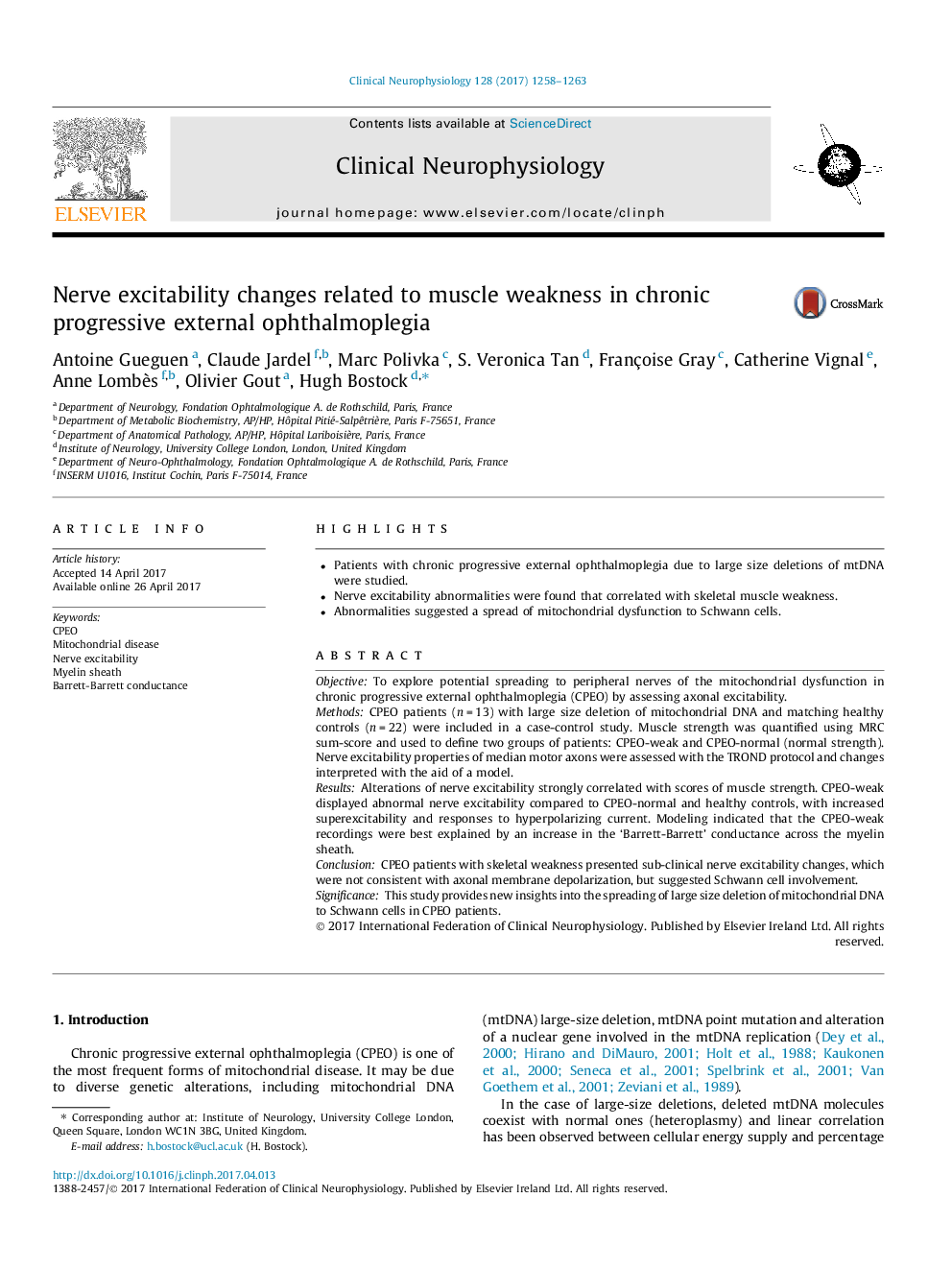| Article ID | Journal | Published Year | Pages | File Type |
|---|---|---|---|---|
| 5627838 | Clinical Neurophysiology | 2017 | 6 Pages |
â¢Patients with chronic progressive external ophthalmoplegia due to large size deletions of mtDNA were studied.â¢Nerve excitability abnormalities were found that correlated with skeletal muscle weakness.â¢Abnormalities suggested a spread of mitochondrial dysfunction to Schwann cells.
ObjectiveTo explore potential spreading to peripheral nerves of the mitochondrial dysfunction in chronic progressive external ophthalmoplegia (CPEO) by assessing axonal excitability.MethodsCPEO patients (n = 13) with large size deletion of mitochondrial DNA and matching healthy controls (n = 22) were included in a case-control study. Muscle strength was quantified using MRC sum-score and used to define two groups of patients: CPEO-weak and CPEO-normal (normal strength). Nerve excitability properties of median motor axons were assessed with the TROND protocol and changes interpreted with the aid of a model.ResultsAlterations of nerve excitability strongly correlated with scores of muscle strength. CPEO-weak displayed abnormal nerve excitability compared to CPEO-normal and healthy controls, with increased superexcitability and responses to hyperpolarizing current. Modeling indicated that the CPEO-weak recordings were best explained by an increase in the 'Barrett-Barrett' conductance across the myelin sheath.ConclusionCPEO patients with skeletal weakness presented sub-clinical nerve excitability changes, which were not consistent with axonal membrane depolarization, but suggested Schwann cell involvement.SignificanceThis study provides new insights into the spreading of large size deletion of mitochondrial DNA to Schwann cells in CPEO patients.
